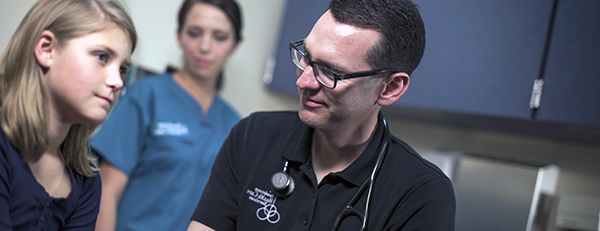Echocardiogram
An echocardiogram (also called an echo) is a type of ultrasound test that uses high-pitched sound waves that are sent through a device called a transducer. The device picks up echoes of the sound waves as they bounce off the different parts of your heart. These echoes are turned into moving pictures of your heart that can be seen on a video screen.
The most common type of echocardiogram is called a transthoracic echo or TTE. This test is done to:
- Look for the cause of abnormal heart sounds (murmurs or clicks), an enlarged heart, unexplained chest pains, shortness of breath, or irregular heartbeats
- Check the thickness and movement of the heart wall
- Look at the heart valves and check how well they work
- See how well an artificial heart valve is working
- Measure the size and shape of the heart’s chambers
- Check the ability of your heart chambers to pump blood (cardiac performance). During an echocardiogram, your doctor can calculate how much blood your heart is pumping during each heartbeat (ejection fraction).
- Detect a disease that affects the heart muscle and the way it pumps, such as cardiomyopathy
- Look for blood clots and tumors inside the heart
Other types of echoes include:
Stress echo: This test is done both before and after you exercise or by injecting a medication that makes your heart beat harder and faster. A stress echo is usually done to find out if you might have decreased blood flow to your heart. A stress echo can be used as part of an echocardiogram (EDG or ECG) to help your doctor learn more about your heart. Stress echo tests are performed at HHC.
Doppler echo: This test looks at how blood flows through the heart chambers, valves, and blood vessels. The movement of the blood reflects sound waves to a transducer. The ultrasound computer then measures the direction and speed of the blood flowing through your heart and blood vessels. If a Doppler echo test is prescribed, you will be referred to a partner hospital.
Transesophageal echo (TEE): For this test, a probe is passed down the esophagus. TEE shows clearer pictures of your heart because the probe is located closer to the heart and the lungs and bones of the chest wall do not block the sound waves produced by the probe. An anesthetic and a sedative are used for this test. TTEs are not performed at HHC. If one is prescribed by your doctor, you will be referred to a partner hospital for the test.
Patient Feedback
"Thank you HHC for giving our family protection, health, assurance, & true care. The "Forever Moments" held in our hearts have so many of you in them. We could not have written our family's beginning any better. We were able to bring our 4 children into this world with full faith in the people providing us care in our most helpless, but most beautiful moment."


